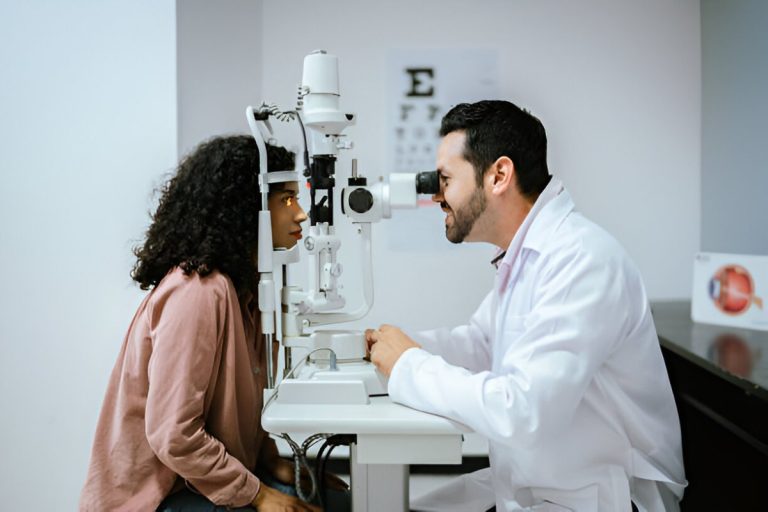Morbid obesity is on the rise in the United States. According to the World Health Organization, about 2.8 million people die each year because of being overweight. Although there are options for diet and lifestyle changes, these do not always work effectively for every person. When weight is affecting a person’s health, there are surgical interventions that can help.
Table of Contents
Obesity Rates Are Increasing in the US
Blame it on fast food, sedentary lifestyles, or both. The rates of morbid obesity in the United States are increasing. Unfortunately, the population of people with BMIs over 50 has increased tenfold, resulting in a dangerous situation. Those who are interested in weight loss surgery need to continue reading to learn as much as possible about their options.
Why Are Diets Sometimes Ineffective?
Each January, millions of people make New Year’s resolutions to get fit and lose weight, but the vast majority of them never reach their goals. Often, people search for fad diets and what they consider quick fixes, but these options only lead to failures.
One of the biggest reason’s diets do not always work is because they are too restrictive. It is best to go through sustainable lifestyle changes that will offer results at a modest rate of one to two pounds of weight loss per week.
When someone has done all, they can to lose weight, to no avail, they may need medical intervention. Those with especially high BMIs and morbid obesity should consider surgical weight loss procedures that can help them become successful in shedding their excess weight and improving their health.
What Is Weight Loss Surgery?
Weight loss surgery procedures, no matter the type, work to decrease the size of the stomach, so patients naturally eat less, resulting in weight loss.
With this procedure, individuals cannot eat large amounts of food at a time. The stomach will only hold a small amount, and it empties much slower, helping individuals to feel more satisfied longer.
With a decrease in the size of the stomach, individuals will find they are in better control of their eating habits and can make healthier food choices than they could without medical intervention. Procedures like gastric sleeve can help to save lives by reducing the comorbidities that follow morbid obesity.
Weight Loss Surgery Has Evolved
The first gastric bypass surgery was performed in 1954 by Dr. A.J. Kremen. Over the decades, other procedures have been carried out, with varying success. Today, there are gastric bypass and gastric sleeve procedures, with each having multiple options in their application. What used to require massive incisions can now be done with the aid of a laparoscope, for less pain and shorter recovery times.
Understanding the Gastric Sleeve Procedure
The gastric sleeve procedure was invented in 1988 and is today one of the most popular options for surgical weight loss. This procedure is performed while the patient is under the effects of anesthesia.
The surgeon performing a sleeve gastrectomy creates a narrow sleeve by carefully stapling the stomach down a vertical line and then removing the larger curved portion of the stomach. This surgery typically lasts one to two hours.
Once the procedure is conducted, the patient will initially be on a liquid diet for the first week. They will then move to a pureed food diet for three weeks, and then on to a regular diet.
What Can People Expect?
It is important to note that weight loss surgery should be considered a tool. It is not weight loss magic and involves consistent and sometimes difficult work. Individuals can expect to lose up to 60% or more of their body weight within the first two years.
If a person does not follow the recommended diet changes, it is possible to regain weight or experience slow progress. Besides resolving weight issues, the following can also be improved or even resolved.
- High blood pressure
- Heart disease
- Sleep apnea
- Type II diabetes
- Infertility
- Stroke
It is imperative individuals keep all their scheduled medical appointments. They will remain under the care of their medical team for life and will require special monitoring to ensure they are getting the right nutrients into their bodies, despite the drastically reduced caloric intake.
Signs a Person May Be a Good Candidate
Weight loss procedures are not for everyone and should never be used as a first resort to losing excess pounds. The following offers some criteria that would make a person a good candidate for a gastric sleeve.
- Individuals should be at least eighteen years of age. This procedure is not recommended for children and adolescents.
- Those seeking a gastric sleeve procedure need to have a BMI of at least 40 or greater.
- The person should be at least 100 pounds overweight.
- Individuals should have a documented history of their weight loss attempts and supervised diets.
- Persons wanting weight loss surgery can have no evidence of psychiatric disorders, drug abuse, or alcoholism.
- There are also health issues that may make this procedure unsafe.
Before a person can go through this weight loss procedure, they will undergo scrutiny from their doctors and the surgical team. Individuals will be required to go through a psychological evaluation, along with medical testing, to ensure they understand the ramifications of the surgery and are healthy enough to be put under anesthesia.
Conclusion
Weight loss is difficult for everyone, but for some, it is nearly impossible. Whether because of certain health conditions, a lack of willpower, or food addictions, weight loss can be hindered.
Thankfully, there are surgical interventions that can help individuals meet their weight loss goals and improve and protect their health. These procedures should never be entered lightly. A surgical weight loss procedure should be considered a permanent option because, in most cases, it cannot be reversed.
Those who are dealing with morbid obesity and are finding it nearly impossible to lose weight and keep it off should ask about gastric sleeve surgery. This procedure helps those who are in danger because of their morbid obesity.













